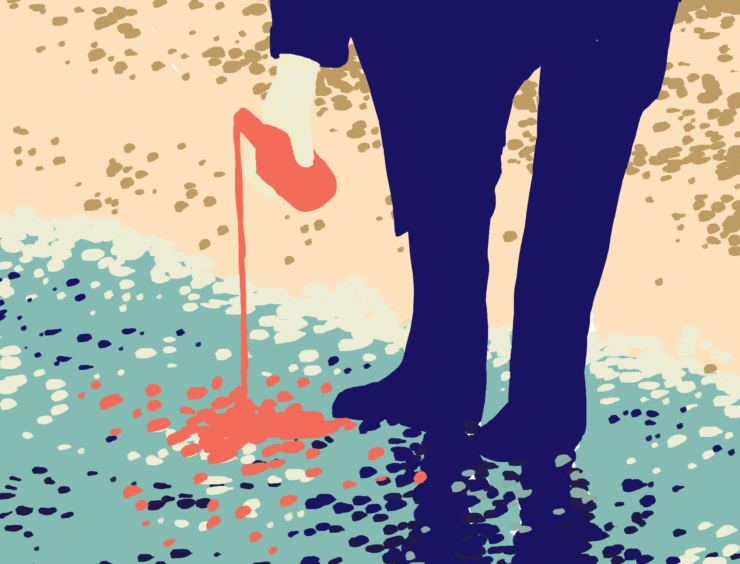News
In Defence of Ephemerality – Chris van der Vegt

Laura Karreman concluded her lecture in the Transmission in Motion series with a couple of elements of the imaginary surrounding motion capture in performance that she had identified. One of these items was that motion capture can enable a kind of “saviour’s complex” toward dance and performance, trying to protect the art from its ephemerality by documenting it. On the one hand I can empathise with this desire to protect performances from disappearing into the past. I would not have been able to write my thesis without the technologies required to document and disseminate performances (although no motion capture is involved in my case study, just regular video recordings). Although I’m grateful that we can record and perserve, all my favorite artworks actively play with their own impermanence.
The first art I recall falling in love with were Jean Tinguely’s self-destroying machines. I first encountered them when I visited Museum Tinguely with my family in Switzerland at age 14. Tinguely was a 20th century sculptor known for his kinetic artworks, some of which were designed to destroy themselves once put into action, the most famous of which being Homage to New York (1960). I recall one sculpture that drove itself into a nearby lake although I cannot find any reference of it now. I believe there was no video of the event, only a conserved part of the machine with text explaining the concept. I loved it precisely because I could not see it in action, because that experience was forever limited to the people in attendance.
A couple weeks ago, I encountered The Dipped Paintings Project (ongoing) by Oliver Jeffers. Jeffers paints full colour portraits that he then dips partially in enamel paint in front of a small audience. On his website Jeffers writes “I never photographed any of the paintings. Therefore, the people present at the time of the performance were the only witnesses to the pre-dipped works. Their testimonies are the sole archives of each portrait’s unobstructed state” (Jeffers n.d.).
My all time favorite work of art is Flesje limonade gazeusein de zee van Petten [bottle of gazeuse lemonade in the sea of Petten] (1961) by Wim T. Schippers. It is exactly what it says on the tin: the artist pours lemonade into the sea while a couple of locals and journalists watch and/or document the deed. There likely was no deeper meaning to the performance. Schippers himself has described the action as “veritably uninteresting” (Smid 2022). And yet to me this is an artwork about art, about its fleetingness, how it begins to matter because we decide it does.
It is thanks to video recording and distribution technology that I know about my favorite artwork (a short news report on the performance is available on YouTube). I cannot go to Petten as see any proof of the lemonade that Wim T. Schippers emptied into the sea in 1961 but that is precisely what brings me so much joy. No art is truly static or permanent. It all exists on a spectrum of ephemerality. But in the (brief) time that it does exist, we get to decide that it matters. We show up to the beach and watch someone pour their lemonade into the ocean, only for it to get lost between the waves.
References
Jeffers, Oliver. “The Dipped Paintings Project.” n.d. Accessed May 9, 2023. https://www.oliverjeffers.com/oliver-jeffers.
Smid, Ally. 2022. “Bij Wim T. Schippers is alles een feest van verwarring.” Trouw. June 28, 2022. https://www.trouw.nl/cultuur-media/bij-wim-t-schippers-is-alles-een-feest-van-verwarring~b8a45c91/#:~:text=%E2%80%9CHet%20tv%2Dprogramma%20Hoepla%2C,een%20’waarachtig%20oninteressant%20feit’.
Theaterencyclopedie. 2011. “Wim T. Schippers: Flesje limonade gazeuse in zee bij Petten.” YouTube video, 0:50. August 23, 2011. https://www.youtube.com/watch?v=a5mVSLclcsw&ab_channel=Theaterencyclopedie.

